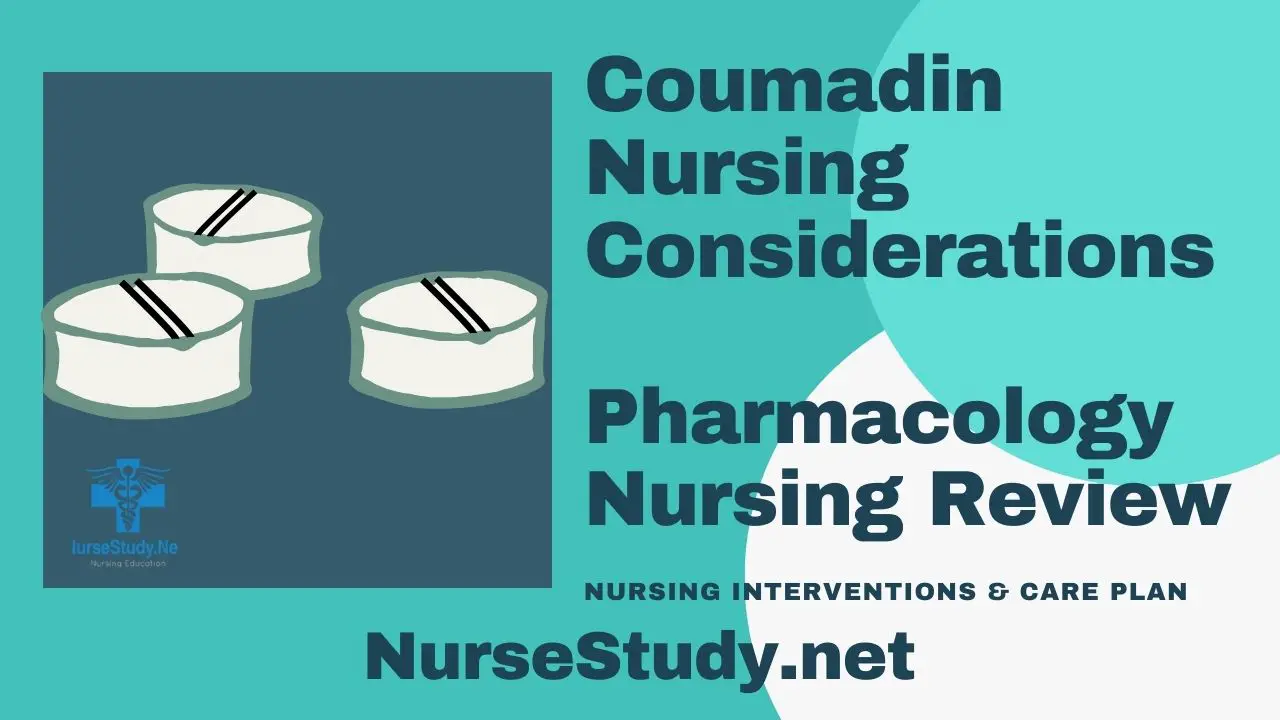Coumadin (warfarin) is an oral anticoagulant medication that helps prevent blood clots from forming or growing larger. It’s commonly prescribed to prevent stroke, heart attack, and other serious conditions caused by blood clots.
Generic name: Warfarin
Brand names: Coumadin, Jantoven
Pharmacologic class: Vitamin K antagonist
Therapeutic class: Anticoagulant
Mechanism of action: Warfarin works by interfering with vitamin K-dependent clotting factors (II, VII, IX, and X) and proteins C and S. It prevents the liver from using vitamin K to produce these clotting factors, thereby reducing blood’s ability to clot.
Indications for use: Prevention and treatment of:
- Deep vein thrombosis (DVT)
- Pulmonary embolism (PE)
- Stroke prevention in atrial fibrillation
- Prevention of clot formation after heart valve replacement
- Prevention of recurrent myocardial infarction
Precautions and contraindications:
- Active bleeding
- Severe thrombocytopenia
- Recent surgery or trauma
- Pregnancy (especially first and third trimesters)
- History of falls
- Severe liver disease
- Uncontrolled hypertension
Drug Interactions
- Antibiotics can increase anticoagulant effects
- NSAIDs increase bleeding risk
- Foods high in vitamin K decrease effectiveness
- Herbal supplements (particularly St. John’s Wort, ginger, garlic)
- Alcohol can increase or decrease effects
- Many other medications can interact with warfarin
Adverse Effects
- Bleeding (major and minor)
- Purple toe syndrome
- Skin necrosis
- Hair loss
- Nausea and vomiting
- Diarrhea
- Fever
- Fatigue
- Hypersensitivity reactions
Administration Considerations
Available preparations: Oral tablets in multiple strengths (1mg, 2mg, 2.5mg, 3mg, 4mg, 5mg, 6mg, 7.5mg, 10mg)
Dosages: Highly individualized based on INR (International Normalized Ratio) goals:
- Typical initial dose: 2-5 mg daily
- Maintenance dose: Adjusted based on INR results
- Target INR range typically 2.0-3.0 (may vary by condition)
Nursing Considerations for Coumadin
Related Nursing Diagnoses
- Risk for bleeding
- Risk for injury
- Deficient knowledge related to medication regime
- Risk for ineffective therapeutic regime management
- Anxiety related to complex medication regime
Nursing Assessment
Assess baseline coagulation studies (PT, INR, aPTT)
Complete bleeding risk assessment:
- Recent surgeries or procedures
- History of GI bleeding
- Current medications
- Fall risk
- Blood pressure
Monitor for signs of bleeding:
- Excessive bruising
- Prolonged bleeding from cuts
- Blood in urine or stool
- Unusual headache or dizziness
- Coffee-ground emesis
Assess compliance and understanding of the medication regime
Evaluate dietary habits, particularly vitamin K intake
Nursing Interventions
- Monitor INR regularly according to facility protocol
- Administer medication at the same time each day
- Document and report any signs of bleeding immediately
- Implement bleeding precautions:
- Use soft toothbrush
- Electric razor for shaving
- Careful assistance with mobility
- Keep reversal agents (Vitamin K, fresh frozen plasma) readily available
- Protect patient from injury:
- Fall precautions
- Padding on bed rails if needed
- Assistance with activities as needed
Patient Teaching Associated with Coumadin
Medication Administration:
- Take exactly as prescribed
- Same time each day
- Never double dose
- Report missed doses
Diet Considerations:
- Maintain consistent vitamin K intake
- Common sources: green leafy vegetables, broccoli, brussels sprouts
- Avoid sudden dietary changes
- Limit alcohol consumption
Lifestyle Modifications:
- Avoid contact sports
- Use electric razor
- Soft-bristled toothbrush
- Wear medical alert bracelet
- Inform all healthcare providers about Coumadin use
Warning Signs to Report:
- Unusual bleeding or bruising
- Blood in urine or stool
- Severe headache
- Dizziness
- Fall or injury
Regular Monitoring:
- Keep all INR appointments
- Maintain INR log
- Record dose changes
Interactions:
- Check with a healthcare provider before starting new medications
- Avoid over-the-counter medications without approval
- No new herbal supplements without consultation
Note: This is not an all-inclusive list of possible drug interactions, adverse effects, precautions, nursing considerations, or patient instructions. Please consult with a pharmacist for complete information.
References
- Patel, S., & Patel, N. (2023). Warfarin. In StatPearls. StatPearls Publishing. Retrieved from NCBI Bookshelf.
- Barnes, G. D., Lucas, E., Alexander, G. C., & Goldberger, Z. D. (2023). National Trends in Ambulatory Oral Anticoagulant Use. The American Journal of Medicine, 128(12), 1300-1305.
- January, C. T., Wann, L. S., Calkins, H., Chen, L. Y., Cigarroa, J. E., Cleveland, J. C., Jr, & Yancy, C. W. (2023). 2023 AHA/ACC/HFSA Focused Update of the 2019 AHA/ACC/HRS Guideline for the Management of Patients With Atrial Fibrillation. Journal of the American College of Cardiology, 71(1), e127-e151.
- Tritschler, T., Kraaijpoel, N., Le Gal, G., & Wells, P. S. (2023). Venous Thromboembolism: Advances in Diagnosis and Treatment. JAMA, 320(15), 1583-1594.
